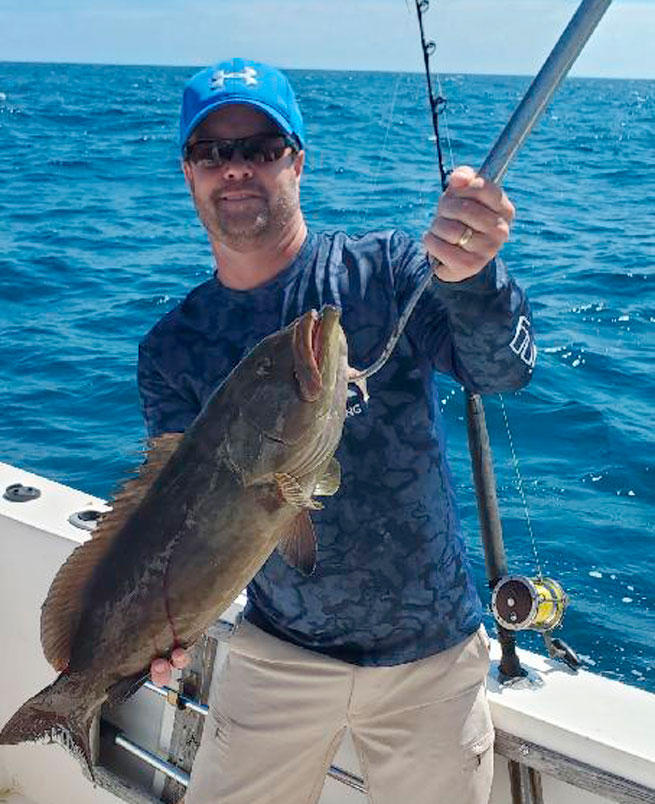
Grouper season closes Jan. 1, 2022 for many species
December’s weather off the coast of southeastern North Carolina is rarely nasty. And it’s a good time to head offshore to fill the cooler with a variety of deep-water bottomfish.
The area features a surprising amount of bottom structure, plus numerous shipwrecks off Cape Fear. And they hold a variety of grouper, snapper, grunts, porgys, black sea bass and more. All taste good and freeze well. So December is a great time to head offshore and stock up. Seasons for several grouper species will close for several months on Jan. 1. So it’s the last opportunity for a while to keep any of them.
Rod Bierstedt of On My Way Charters in Wilmington, N.C., said this is a great time to fish offshore. The fish, which usually bite well anyway, are fired up by the cooling water. So catching a limit is simply a matter of getting properly positioned over structure holding fish.
Bierstedt (910-352-2719) likes catching grouper and snapper as much as anyone. But he points out there is a huge reef complex of porgys, grunts and others with a liberal 20-fish limit, plus black sea bass and more good-tasting species, especially on cold windy days in January and February.
Spanish sardines are killer baits
“I have anchored on productive structure for years. But I will soon be adding a spot-lock trolling motor to make staying in position easier,” Bierstedt said. “Once in place, I give a ledge 30 minutes or so to get the fish fired up and biting. You can catch fish while drifting, but you keep drifting away from the fish that just got interested and started biting.
“I use a bait combination we used to use fishing commercially, and the fish like it,” Bierstedt said. “I begin with a Spanish sardine hooked through the eyes and add a fillet from a tomtate or redmouth grunt slipped on the hook upside down. The fillet moves a bit in the current, and the smaller fish attack it and tear it apart, but they don’t mess with the sardine. When their frenzied activity gets the attention of a big fish, there’s still bait when it swims over to see what is happening.
Bierstedt recommends using 130-pound braid to eliminate stretch when trying to hoist big fish out the rocks 100 or more feet below. He said the first 30 feet is critical, and monofilament has too much stretch. He uses 150-pound mono to make a combination of single- and double-drop rigs that end in circle hooks.
Bierstedt fishes 5-foot-8 Ugly Stik XH Jigging rods fitted with Penn 4/0 Senator and Shimano Torium TG reels in the 20 and 30 sizes. He said they have the right combination of sensitivity to feel subtle bites and power to wrestle big fish off the bottom quickly.




Be the first to comment